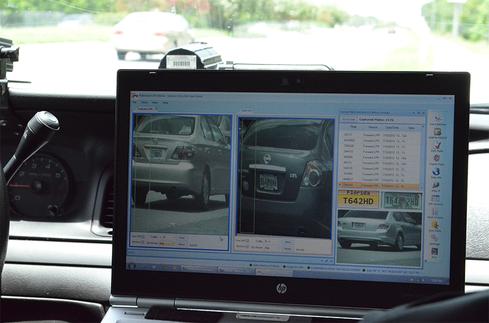License Plate Recognition Technology Branches Out
Law enforcement officials see new security and surveillance uses for license plate recognition technology.

When Officer Lloyd Johansen pulls his patrol car to the side of the road in Port Richey, Fla., he can file a report on his laptop, get on the radio to HQ, or keep an eye out for seat belt violations.
Running continuously in the background on a laptop while Johansen is multitasking in his patrol car is a license plate recognition (LPR) system from PlateSmart Technologies that captures the plate numbers of all the cars that pass by and instantly returns data on the vehicles from federal, state, and local law enforcement databases.
"I can post up in a stationary position, activate the [LPR] system, and conduct other traffic enforcement, whether for speed measurement or looking for seat belt violations or other civil infractions," Johansen told InformationWeek. "While the system is going on its own, I can even type reports, and it will put an alert on my screen. I'll verify the information, and if everything is valid, I'll make my traffic stop based on the information."
The ability to scan plates constantly and return data quickly can also lead to some surprises. "It can bring your attention to something you might not normally see," he said. "I've come across brand-new vehicles [with infractions] that I wouldn't necessarily pay attention to. I might get [a driver] with a suspended driver's license or a passenger with a warrant."
[Police are asking for help tracking stolen smartphones. See Smartphone Kill Switches Coming, But Critics Cry Foul.]
Johansen and the police department in Port Richey, located about 30 miles north of Clearwater on Florida's west coast, adopted PlateSmart's software-based LPR analytics system in late 2012. Using movable, high-quality color cameras mounted inside the police car, the software-based LPR system's optical character recognition engines provide about 90% accuracy, company officials said.
The system is also super fast. It can search about 2.5 million data points and return critical information to the officer in about 0.7 milliseconds, according to PlateSmart founder and CEO John Chigos.
The open-platform system is hardware agnostic -- it is designed to work with any camera and mesh with third-party software or hardware.
"Since it's integrated into [law enforcement] data hubs that draw down this information, the data is automatically downloaded into the system," Chigos said. "We've combined all that into software. We've created a software package that takes away all the hardware requirements and does it through the software."
The company recently announced the introduction of LPR in a software-as-a-service model that provides greater access and scalability. The cloud-based system doesn't require any onsite installation by the end user. Instead, users supply PlateSmart with license plate images via the Internet, and the data is returned to users for review.
PlateSmart also has launched an enterprise version of the system that is intended to go far beyond law enforcement use in a police car and deploy
LPR technology to secure government buildings, parking lots, and other vulnerable areas, Chigos said.
For example, when PlateSmart LPR was deployed for security in parking areas during the annual Tampa AirFest show last month at MacDill Air Force Base, the system scanned more than 11,000 vehicles and returned 200 hits, including violations for suspended driver's licenses, expired registrations, and criminal warrants.
The enterprise product, called Analytic Recognition Enterprise Solutions (ARES), adapts the LPR system to any video security system and supports a wide range of surveillance uses. "It's a complete analytical enterprise backend for all data coming out of any of the LPR systems," Chigos said. "It's totally scalable. You can have one camera or 10,000 cameras."
One of the new government users of ARES is Naval Criminal Investigative Services (NCIS), the main law enforcement and security agency for the Navy Department. NCIS responsibilities include counterterrorism and counterintelligence functions. PlateSmart officials said the Navy will use the LPR system to secure bases and ports.
Another new enterprise user is Florida's Port Tampa Bay, one of the busiest ports in the US. The LPR system will provide port security officials with constant, real-time data on all vehicles entering and leaving port facilities and help detect suspicious vehicle activity.
Chigos notes that Port Tampa Bay is one of the nation's largest shippers of fertilizer, which can be used in making explosives. He envisions an expanded role for LPR surveillance in preventing terrorist attacks at secure facilities. "The data we generate is not the end all and be all, but it is one important part of the link of data that can prevent things."
The NSA leak showed that one rogue insider can do massive damage. Use these three steps to keep your information safe from internal threats. Also in the Stop Data Leaks issue of Dark Reading: Technology is critical, but corporate culture also plays a central role in stopping a big breach (free registration required).
Read more about:
2014About the Author(s)
You May Also Like
How to Amplify DevOps with DevSecOps
May 22, 2024Generative AI: Use Cases and Risks in 2024
May 29, 2024Smart Service Management
June 4, 2024







